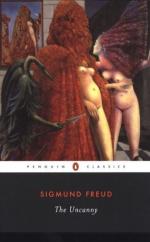
|
| Name: _________________________ | Period: ___________________ |
This test consists of 15 multiple choice questions and 5 short answer questions.
Multiple Choice Questions
1. What did Henri do with his companions to the person in his early childhood dream?
(a) Pulled the girl's hair.
(b) Threw dirt at the young girl.
(c) Stole the girl's flowers.
(d) Yelled at the girl.
2. What is the basis of Freud's essay, "Creative Writing and Daydreaming"?
(a) To better understand the genesis of the creative process.
(b) To daydream.
(c) To understand how writing and dreaming manifested.
(d) To have the opportunity to write creatively.
3. What is the condition of the memory once the two forces coexist in the case of a childhood memory?
(a) The memory is distorted.
(b) The memory is clear.
(c) The memory is suppressed.
(d) The memory is vague.
4. Who does the person in Henri's dream run to?
(a) Her father.
(b) No one.
(c) Her mother.
(d) Her grandmother.
5. What is the first force Freud mentions is at play in childhood memories?
(a) The force to retell the event.
(b) The force the event has on our adult life.
(c) The motive to remember the event.
(d) The motive to suppress the event.
6. What is the person wearing in Henri's early childhood memory?
(a) Jeans.
(b) An apron.
(c) A yellow dress.
(d) A green dress.
7. What does Freud suggest about the memories we recall as adults about our childhood really are?
(a) They are substitutions.
(b) They are distortions.
(c) They are not memories at all.
(d) They are projections.
8. What can fantasies do for a healthy dreamer?
(a) Reach one's dreams.
(b) Stay grounded.
(c) Think through the possibilities of the future.
(d) Dream big.
9. According to Freud, what do childhood memories appear to be?
(a) Emotionally unimportant.
(b) Literal.
(c) Emotionally important.
(d) Subtle.
10. What does a daydream attempt to do for the dreamer?
(a) Alleviate pressure of real life.
(b) Escape real life.
(c) Avoid real life.
(d) Live out hidden desires.
11. What does Henri remember about what he was given in his early childhood dream?
(a) The milk was smoothe.
(b) The honey was sweet.
(c) The bread was delicious.
(d) The water was cold.
12. When does conflict arise between the two forces in the case of childhood memories?
(a) After an emotioanlly traumatic situation.
(b) After an emotionally happy situation.
(c) After a death.
(d) After a birth.
13. How old was Henri in the other memory he recalls to Freud?
(a) 17 years old.
(b) 19 years old.
(c) 20 years old.
(d) 18 years old.
14. What is the difference between night and day dreams, according to Freud?
(a) Night dreams are supreme to daydreams.
(b) Daydreams are irrelevant.
(c) Daydreams are more acceptable than night dreams.
(d) Night dreams are more acceptable than day dreams.
15. What happens as a result of the conflict between the two forces in the case of childhood memories?
(a) Nothing.
(b) A replacement of the memory occurs.
(c) A substitution of the memory occurs.
(d) A distorted version of the memory takes shape.
Short Answer Questions
1. When does Freud argue the creative process begins for a person?
2. What does the childhood period serve in a person's life, according to Freud?
3. At what age are most early memories formed?
4. Who went up to the person in Henri's dream with Henri?
5. What age does the creative process especially begin to unfold in a person, according to Freud?
|
This section contains 575 words (approx. 2 pages at 300 words per page) |

|




